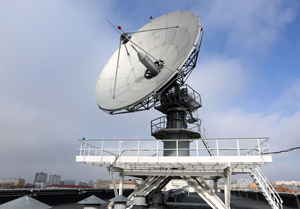Ru
|
Eng
Roscosmos, NASB to develop new satellite
04.03.2015

The Russian space agency Roscosmos and the National Academy of Sciences of Belarus are busy developing a new satellite for the remote sensing of the Earth, BelTA learned from Academician Piotr Vityaz, Chief of Staff of the National Academy of Sciences of Belarus, on 4 March.
According to the source, a new space program of Belarus provides for creating the satellite. “We are now working with Roscosmos on what the satellite will look like. It may be a satellite with the resolution of less than one meter,” Piotr Vityaz remarked. The official explained that this resolution is what the customers want.
According to the Academician, the government is revising the concept of the new space program. Once the program is adopted, specialists of the National Academy of Sciences of Belarus and Roscosmos will be ready to get down to creating the satellite right away. The satellite may be built within three years.
Earlier BelTA quoted Sergei Chizhik, First Deputy Chairman of the Presidium of the National Academy of Sciences of Belarus, as saying that Belarus is a space power because the country has a satellite of its own. Shots taken by the Belarusian satellite are used by eleven ministries and agencies of Belarus. The number includes the Emergencies Ministry, the Forestry Ministry, the Natural Resources and Environmental Protection Ministry. The shots are available for free for Belarusian public sector organizations or private organizations that carry out projects at the expense of the state budget. The import substitution effect is estimated at about $5 million.
The Belarusian satellite BKA was put into orbit together with the Russian satellite Canopus-B at an altitude of about 500-520km using the carrier rocket Soyuz and the booster module Fregat on 22 July 2012. The shots taken by the Belarusian satellite boast high spatial resolution and provide panchromatic views (one channel) of the Earth’s surface with the resolution of 2.1m and multiple-channel views (4 channels) with the resolution of 10.5m. The optoelectronic equipment weighs a total of 150-200kg. It was made by the Belarusian company Peleng and the Cybernetics Institute. The rest of the equipment was made in Russia and the UK.
According to the source, a new space program of Belarus provides for creating the satellite. “We are now working with Roscosmos on what the satellite will look like. It may be a satellite with the resolution of less than one meter,” Piotr Vityaz remarked. The official explained that this resolution is what the customers want.
According to the Academician, the government is revising the concept of the new space program. Once the program is adopted, specialists of the National Academy of Sciences of Belarus and Roscosmos will be ready to get down to creating the satellite right away. The satellite may be built within three years.
Earlier BelTA quoted Sergei Chizhik, First Deputy Chairman of the Presidium of the National Academy of Sciences of Belarus, as saying that Belarus is a space power because the country has a satellite of its own. Shots taken by the Belarusian satellite are used by eleven ministries and agencies of Belarus. The number includes the Emergencies Ministry, the Forestry Ministry, the Natural Resources and Environmental Protection Ministry. The shots are available for free for Belarusian public sector organizations or private organizations that carry out projects at the expense of the state budget. The import substitution effect is estimated at about $5 million.
The Belarusian satellite BKA was put into orbit together with the Russian satellite Canopus-B at an altitude of about 500-520km using the carrier rocket Soyuz and the booster module Fregat on 22 July 2012. The shots taken by the Belarusian satellite boast high spatial resolution and provide panchromatic views (one channel) of the Earth’s surface with the resolution of 2.1m and multiple-channel views (4 channels) with the resolution of 10.5m. The optoelectronic equipment weighs a total of 150-200kg. It was made by the Belarusian company Peleng and the Cybernetics Institute. The rest of the equipment was made in Russia and the UK.
SCIENCE. TECHNOLOGY. INNOVATIONS
13.08.2024
28.06.2024
28.06.2024
25.06.2024
05.06.2024
15.05.2024
15.05.2024
26.04.2024
26.04.2024
26.04.2024













